Farmer DIY: Weed-Specific Robotic Sprayers at Agriculture’s Door

Farmer-built, weed-specific sprayers are on the near-horizon for agriculture. The evidence? DIY, green-on-brown sprayers are already applying herbicide to fallow ground, built with open-source design, camera-based detection, and off-the-shelf parts for a song—as in $280.
“It’s only a matter of time to move from the simple to the complex,” says Guy Coleman. “I think the next few years we could have farmers building their own low-cost, open-source weed recognition devices and using green-on-green algorithms for specific weeds such as Palmer amaranth and waterhemp.”
Words are easy, but Coleman is all action, including his brainchild, OWL, the OpenWeedLocator project—open-source weed detection technology. “We want people with no experience in electronics to be able to build one of these weed detectors,” he adds. “Take the idea, improve it, and run.”
Shoulder to the Door
In 2019, Coleman was tasked with a tall order: Weave the threads of an idea for an open-source agriculture project utilizing low-cost components and robotics. However, open-source agriculture technology, often freely accessible without trademark, is the realm of the faithful, but few. (Open-source licenses provide varying degrees of freedom, and sometimes require different levels of attribution.)
The greater world of technology is populated by seemingly countless open-source efforts and communities, but agriculture is an outlier. Agriculture has very few open-source channels, either amateur or professional. “We’ve got AgOpenGPS, Weed AI, FarmOS, FarmBot, OWL, Acorn, and some under the radar, but nothing that can be considered in the mainstream in huge numbers,” Coleman notes.
Raised in Perth, Western Australia, Coleman (currently a PhD student at the University of Sydney and Fulbright Future Scholar based at Texas A&M University) bounced several ideas off multiple agronomists and farmers, and put crosshairs on an opening tech goal of automated, generalized weed detection and herbicide application. Cheap. Direct. Green on Brown.
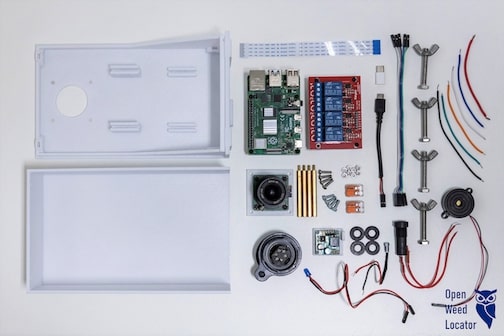
Alongside William Salter, an agriculture scientist at the University of Sydney, Coleman put a shoulder to Amazon’s door, and ordered a $12 relay control board, $100 Rasberry Pi computer, and a cheap camera.
“I wasn’t thinking in terms of a dollar figure. Instead, I just targeted a device that I could afford in my own circumstances. I have no background in electrical engineering, so I bought circuit boards that were ready to be used. We only spent several hundred dollars, but that’s the proper place to start, with low risk if it failed,” Coleman explains.
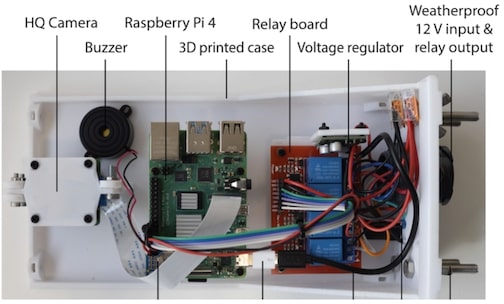
Additionally, he manufactured several small components with a 3D printer. Long story short: Coleman finessed the code and algorithms, published the “how-to” OpenWeedLocator (OWL) directions online, and hit the field with a starting point product in 2021.
Start Simple
In a maiden effort, Coleman and Salter built a 2-meter boom with 25 cm nozzle spacings utilizing TeeJet nozzles, wired the sprayer to the OWL, and set the boom roughly 1.5’ above the ground, attached to the back of a small pickup truck. In a nutshell, the OWL performed well, spraying a turnrow for weeds at 4 miles per hour.
A second proof-of-concept featured an OWL wired to a University of Sydney automated vehicle applying desiccant to chickpeas as well as spot spraying weeds. Once again, the results were promising, according to Coleman.
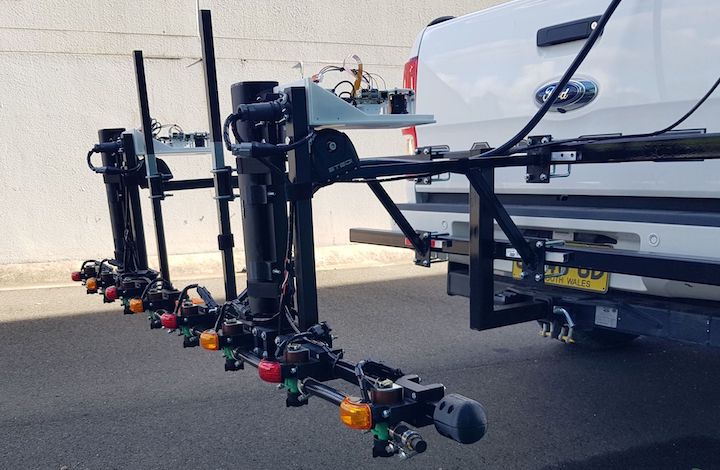
“We want to get to a speed of about 10-12 miles per hour that farmers have said is more useful for them, but we’re still in development. Right now, it works best in the daylight, but we can attach bright lights for some nighttime testing. Also, we’re only using a cheap $100 camera. Considering how basic things are at the beginning, I’m really pleased with the testing.”
Whether a user wants to build a boom is contingent on circumstance, Coleman continues. “If you have a spot-spraying boom already, then you’re fine. The most difficult thing is the solenoid that switches the nozzle on and off. If you have that boom, then it is straightforward to plug in as long as the solenoids are 12 volts and you don’t mind doing some rewiring. We’re still at the stage where you have to wire in the solenoids and do a reasonable amount of wiring instead of use ISOBUS, but there is nothing exceptionally complex.”
OWL is also seeing use beyond generalized spot spraying, Coleman emphasizes. Multiple farmers have fitted the device to orchard sprayers for application beneath trees, and to shielded sprayers for more specific spot spraying between crop rows.

“We’ve tried to make this as easy as possible with a detailed guide,” Coleman adds. “You can start simple and go difficult later if you’d like, or start at the deep end. This is also about getting the ball rolling for agriculture because OWL thrives off engagement and feedback—people using it and telling what they did on a particular farm or soil. That’s what we need in open-source for agriculture.”
Hat Tip
Money on the table. Contrary to public perception, open-source tech can provide financial opportunity. In the case of OWL, kits could be produced and sold to farmers at varying price levels dependent on the technology deployed. The main requirement is acknowledgment of the license as laid out in the terms and conditions—essentially a hat tip to OWL. “Build off it and sell,” Coleman says. “People always think open-source technology can only ever be free, but it can provide business opportunities, just like any industry. People still sell cookies even though the recipes are available everywhere.”
Coleman currently performs OWL demos at field days, for students and workshops, and he is partially fueled by a desire to introduce farmers to a new facet of DIY—the ability to create and customize digital equipment, discovering how it works in the process. “Right now, you have a black box on your sprayer and if it breaks, you’re at the mercy of the technician or manufacturer. Things are changing so fast and that may not be the case for all farmers in the long-term, especially with open-source options.”
Build Instead of Buy
Out of gate, OWL enables a farmer to construct a site-specific spot spraying system for roughly $280—designed for fallow-type weed control scenarios. OWL sees green and sprays accordingly, and therefore is not equipped to function in a standing crop.
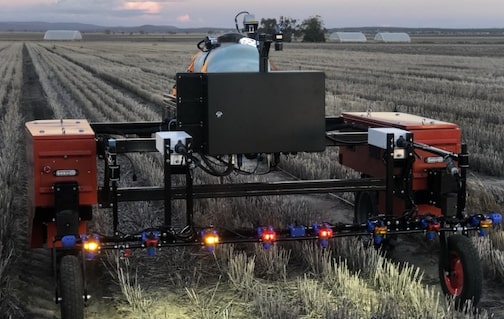
However, Coleman is confident open-source innovation is on a direct path, likely within the next few years, to create an extremely low-cost, automated sprayer capable of applying herbicide to specific weeds on the fly in a crop. “Green on green is where this is going,” Coleman says. “We might need something more powerful than a Raspberry Pi computer to process more complicated algorithms to detect Palmer, waterhemp, or any other weed.”
“That’s where something like our Weed-AI open-source project comes in—crowd-sourced images of a specific weed to train an algorithm. With enough input from farmers and the weed control industry, the opportunity is going to be there to develop algorithms that have access to giant, open-source datasets on weeds. The technology is all here, but just has to be pieced together. Image quality, row width, distance, lighting, soil, crop type, weed growth stage, weed height, color, angle, camera type are all complicating factors—so many gaps to fill, but it’s going to happen where a farmer will have the option to collect their own images, and build these units instead of buy.”
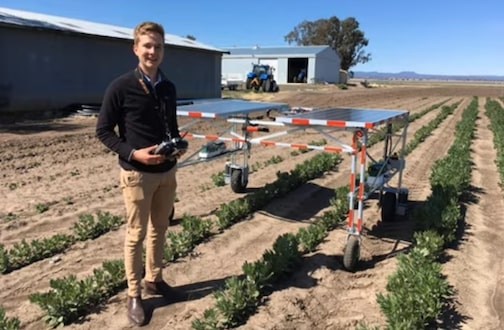
In the 20th century, when agriculture pulled away from mule power and harnessed the age of mechanization, farmers tinkered on countless, forgotten DIY projects—almost always operating in isolation. However, the digital age has erased most traditional farm boundaries and fostered an unprecedented opportunity for innovation and collaboration. How will open-source tech fare in agriculture?
“Open-source is an opportunity to continue to get better and grow with what people need and want,” Coleman concludes. “In agriculture, we all know there is often a closed source mindset, which can make things difficult to repair. I just want people to consider open-source as an option. Once you get so many minds working together, you can alter, upgrade, fix, build momentum, and reach critical mass.”
See GitHub to access the OpenWeedLocator (OWL) project.
To read more stories from Chris Bennett (cbennett@farmjournal.com — 662-592-1106), see:
Cottonmouth Farmer: The Insane Tale of a Buck-Wild Scheme to Corner the Snake Venom Market
Tractorcade: How an Epic Convoy and Legendary Farmer Army Shook Washington, D.C.
Bagging the Tomato King: The Insane Hunt for Agriculture’s Wildest Con Man
How a Texas Farmer Killed Agriculture’s Debt Dragon
While America Slept, China Stole the Farm
Bizarre Mystery of Mummified Coon Dog Solved After 40 Years
The Arrowhead whisperer: Stunning Indian Artifact Collection Found on Farmland
Where's the Beef: Con Artist Turns Texas Cattle Industry Into $100M Playground
Fleecing the Farm: How a Fake Crop Fueled a Bizarre $25 Million Ag Scam
Skeleton In the Walls: Mysterious Arkansas Farmhouse Hides Civil War History
US Farming Loses the King of Combines
Ghost in the House: A Forgotten American Farming Tragedy
Rat Hunting with the Dogs of War, Farming's Greatest Show on Legs
Misfit Tractors a Money Saver for Arkansas Farmer
Government Cameras Hidden on Private Property? Welcome to Open Fields
Farmland Detective Finds Youngest Civil War Soldier’s Grave?
Descent Into Hell: Farmer Escapes Corn Tomb Death
Evil Grain: The Wild Tale of History’s Biggest Crop Insurance Scam
Grizzly Hell: USDA Worker Survives Epic Bear Attack
Farmer Refuses to Roll, Rips Lid Off IRS Behavior
Killing Hogzilla: Hunting a Monster Wild Pig
Shattered Taboo: Death of a Farm and Resurrection of a Farmer
Frozen Dinosaur: Farmer Finds Huge Alligator Snapping Turtle Under Ice
Breaking Bad: Chasing the Wildest Con Artist in Farming History
In the Blood: Hunting Deer Antlers with a Legendary Shed Whisperer
Corn Maverick: Cracking the Mystery of 60-Inch Rows








